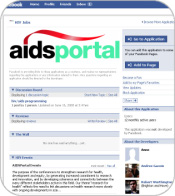Introduction to Mashups: 1 + 1 = Mashups?

MashupsExit Disclaimer -- what are they? Are they being used by the HIV/AIDS community? To learn more, we spoke with Rob Worthington from AIDSportalExit Disclaimer and HIV.gov advisor, David GalielExit Disclaimer.
What is a mashup?
Rob told us, “A mashup is a way of combining data, content, or a function from different websites in a new or innovative way. This can create extra value or utility.”
Many mashups incorporate maps. New York City Coalition Against HungerExit Disclaimer created a mashup that uses Google MapsExit Disclaimer, geographical information, and their own data to help those who have access to the Internet to find help. David said, “The Coalition links data from food providers, soup kitchens, and homeless shelters that allow people to quickly find free meals, farmer’s markets, or soup kitchens.”
Other public health mashups include Who is Sick?, a mashup combining consumer driven (“user-generated”) health information, social networking, and Google maps. Health Care That WorksExit Disclaimer uses Google Maps and data from state and federal government agencies to highlight the impact of hospital closures on low-income communities and communities of color. HealthmapExit Disclaimer also uses Google Maps and integrates outbreak data from sources such as Google NewsExit Disclaimer, ProMEDExit Disclaimer, and the World Health OrganizationExit Disclaimer.
Not all mashups involve maps, and many combine multiple information sources and display information in multiple formats. An example of this is HubMedExit Disclaimer, a mashup that uses information from PubMed’s database to produce a search interface to browse, organize and gather information from the biomedical literature.
How can AIDS Service Organizations use mashups?
Rob told us how AIDS Portal is taking advantage of mashups: “Our first mashup used an RSS feed to create an AIDS Job applicationExit Disclaimer.” He explained, “As new job vacancies are posted on AIDSPortal, they automatically appear in Facebook.” Read more about this at the AIDS Portal blogExit Disclaimer.
Another example of an HIV-specific mashup is the International AIDS Candlelight Memorial of the Global Health Council’s mashupExit Disclaimer of Google Maps with their list of local coordinators.
Rob suggests, “Think about the problems your stakeholders or users face that a mashup could address. For instance, they might want to know where they can access a particular type of AIDS-related service, such as voluntary counseling and testing. A mashup could help you display a list of services on a map, enabling people to see which services are closest to them.”
Getting Started
David told us that “it’s important to note that mashups do require a certain level of comfort with software technology, yet there are several online tools for building mashups that do not require deep technical expertise.” “Plug and play” tools like ZeeMapsExit Disclaimer and DapperExit Disclaimer can help you get started.
The mashup portal ProgrammableWeb.comExit Disclaimer is a comprehensive resource with introductory tutorials, a directory of mashups, and news. ProgrammableWeb also helps connect mashup coders with organizations that need their services.
“Once you have an idea that you think will help your users,” said Rob, “you need to look at where you can get the data you need. Do you have a database of your own, or is this data already published somewhere on the Web?”
Mashups depend on organizations using open formats and sharing data. They also depend on software developers to develop programs that can talk to each other. So, as you look at ways to use mashups to help your mission, we encourage you to think about ways that you can, in turn, provide mashup content for others to use.
And be sure to come back and post a comment here to let us know what you are doing!